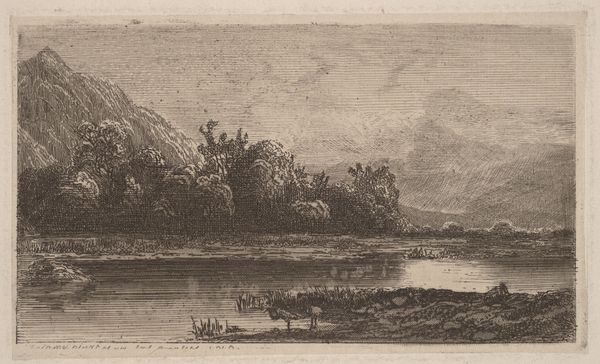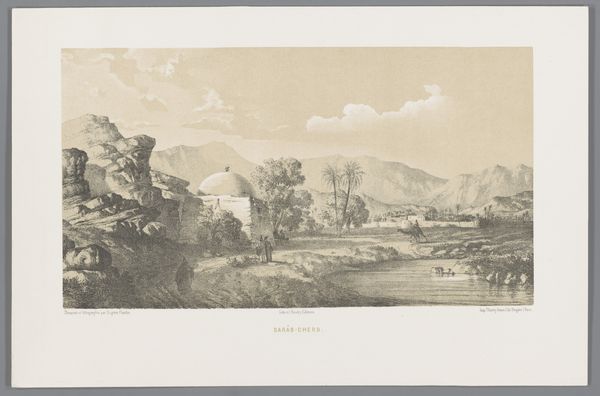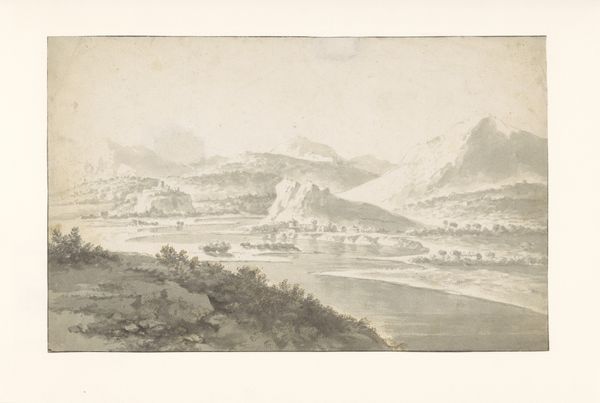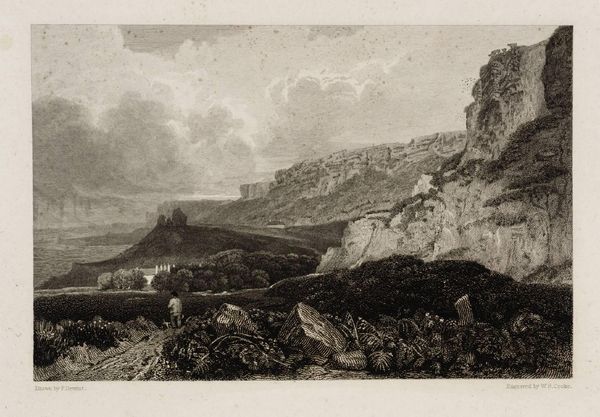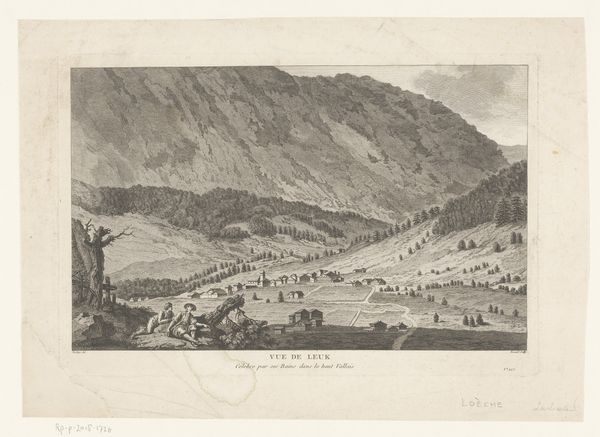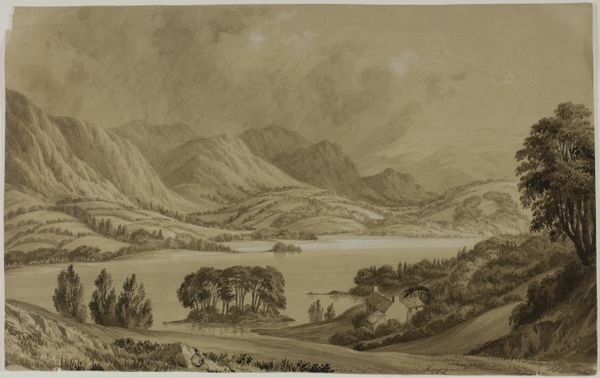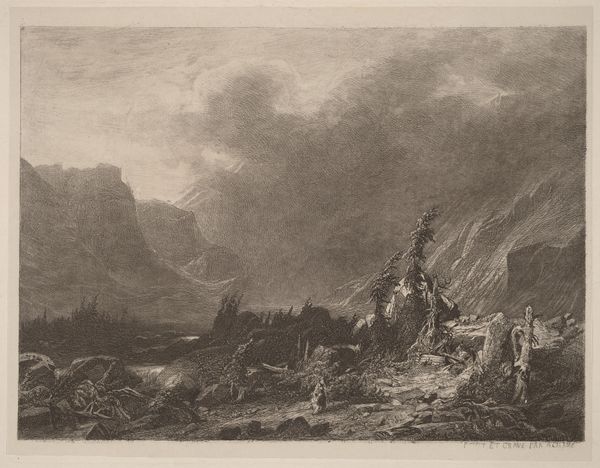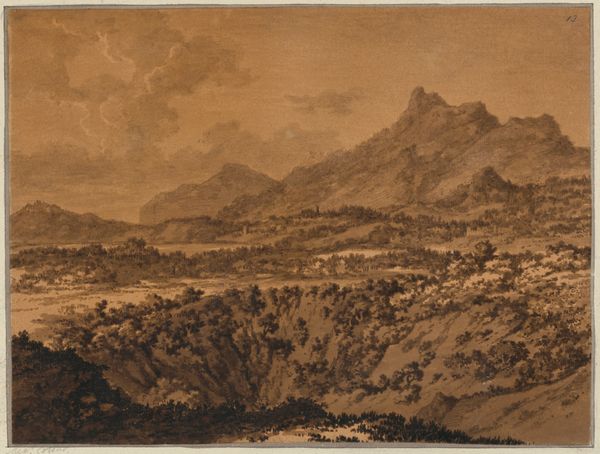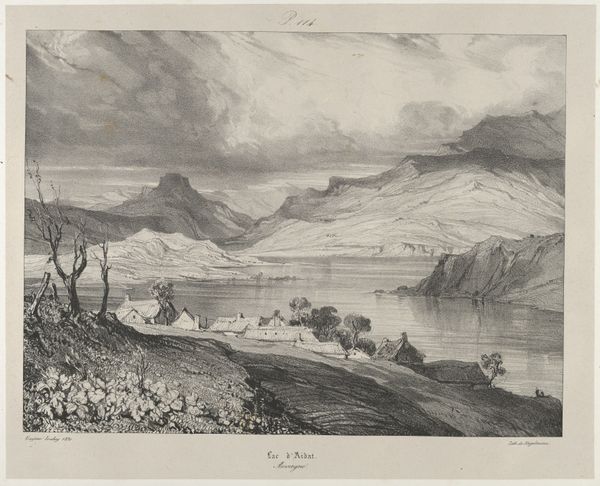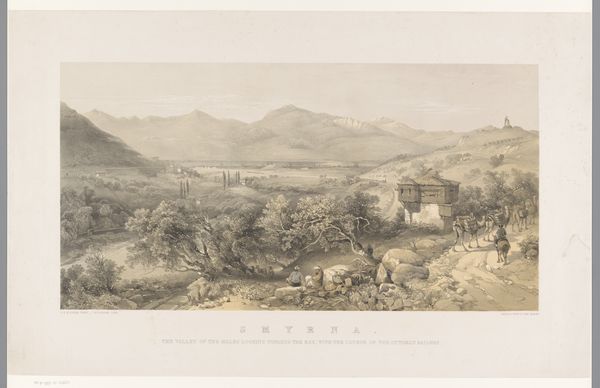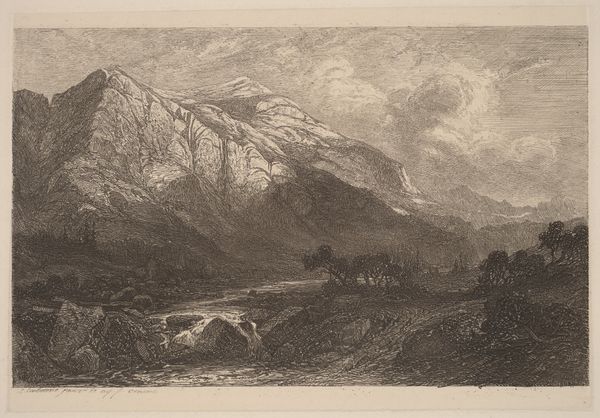
Chain of Alps from Grenoble to Chamberi (Liber Studiorum, part X, plate 49) 1812
0:00
0:00
drawing, print
#
drawing
# print
#
human-figures
#
landscape
#
romanticism
#
mountain
#
history-painting
Dimensions: plate: 7 x 10 3/8 in. (17.8 x 26.4 cm) sheet: 8 5/16 x 11 9/16 in. (21.1 x 29.4 cm)
Copyright: Public Domain
Editor: This is “Chain of Alps from Grenoble to Chamberi,” a print made by J.M.W. Turner in 1812. The sepia tones create such a sense of distance, almost as if you’re looking back through time. What stands out to you in terms of its historical significance? Curator: Considering the political landscape of 1812, dominated by the Napoleonic Wars, a seemingly pastoral image like this takes on new weight. Turner, though an Englishman, depicted a scene in then-French territory. It wasn’t simply a depiction of nature; it was engaging with contemporary political geography. How do you see that tension playing out visually? Editor: I suppose the seemingly serene scene could be a comment on the idealized landscape, sort of divorced from the conflicts of the time? Maybe even a critique? Curator: Precisely. Furthermore, consider the medium. Why create a print, which is easily disseminated, instead of a painting, which is unique and often caters to a wealthy patron? Editor: To reach a wider audience? Perhaps to share his vision with more people during a period of upheaval? Curator: Exactly. Prints allowed artists to engage in a broader cultural discourse, shaping public opinion. Also, it's interesting to note the picturesque quality alongside an almost historical painting them, don’t you think? What sort of power dynamics might this imagery engage? Editor: Hmmm, good point. Maybe the juxtaposition normalizes French territory, even glorifies it, by presenting it in an appealing, idealized fashion? Curator: Interesting thought. Seeing how this image operated within the art market and the social consciousness is an incredible part of understanding the artistic intention and how Turner situates the work’s impact. Editor: I had not thought about the implications of the print as a political statement and Turner's potential intent. This contextual understanding provides an additional depth of appreciating this work!
Comments
No comments
Be the first to comment and join the conversation on the ultimate creative platform.


